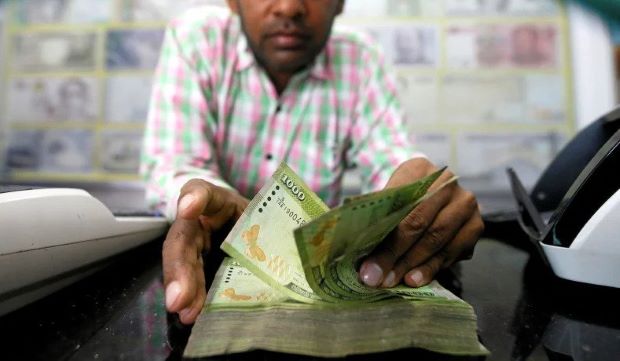Sri Lanka to operate ad hoc exchange rate peg from March 7
COLOMBO – Sri Lanka will operate an ad hoc peg with the central bank intervening in foreign exchange markets from time to time without a pre-announced path from Tuesday (7), after surrender requirements and a guidance peg is terminated.
Sri Lanka had operated a peg around 360 to the US dollar with complementary monetary policy up to the last week of February and with a reversal in private credit and an overall decline in domestic credit, the central bank’s purchases of dollar outpaced its sales in the last quarter.
This week a surrender rule that took dollars away from the market and created rupee liquidity was reduced to 15% form 25%, releasing more dollars for market activity and a guidance peg was pushed up from around 360 to 340 to the US dollar as dollar sales from banks increased.
Tuesday will be the last day under which banks have to sell dollars collected from exporters and importers to the central bank.
“We hope with sufficient liquidity and depth in the foreign exchange market, the market itself will stabilize through the demand and supply. This is what we expect from Tuesday onwards,” Governor Weerasinghe said.
After that central bank will buy dollar from the market under a non-transparent price or rule.
“Whenever there is an opportunity we will buy (foreign exchange) to build up our buffers,” Governor Weerasinghe said.
“Also to stabilize the volatile movements we can intervene both ways, to stabilize when it is needed, but it will be still be a mostly market driven exchange rate.”
Such ad hoc pegs, which are neither stable hard peg nor consistent clean floats, are now called ‘flexible exchange rates’ by the International Monetary Fund (IMF).
A central bank purchase of dollars pushes a currency peg down (weakens the exchange rate), net foreign assets (NFA) of the central banks goes up, and creates rupee liquidity, which should bring down short term and eventually market interest rates.
This week the central bank had bought 308 million US dollars after the surrender rule was relaxed, importers held back as the spot rate strengthened and banks sold down their open positions.
“That will also help improve rupee liquidity in the market,” Governor Weerasinghe said. “For example this week 308 million [purchase] means we have injected 108 billion rupees to the domestic money market.”
“That also has helped stabilize the deficit situation which will also help stabilize the market interest rates as well and continue to trend of market interest rates moving in the same direction.”
The central bank is able to buy dollars as domestic credit has slowed and the liquidity created is not being pushed to the real economy as credit (and imports).
Sri Lanka’s pegged central bank is now in a cycle where liquidity from dollars is sterilized or mopped up through the liquidity short and banks will take back Treasury bill given to its standing lending facility window.
A flexible exchange rate central bank, however fails to allow the opposite to happen (allow interest rates to rise when foreign reserves are sold absorbing domestic liquidity) triggering forex shortages, depreciation, social unrest and if it is a market access country, sovereign default, critics say.
The cycle can repeat endlessly every two to three years, resulting in repeated IMF bailouts, until the policy rate is abandoned (or the corridor is widened or standing facilities are closed as in some East Asian countries) fixing the exchange rate or until the ad hoc peg is abandoned allowing a clean floating exchange rate, analysts say.
The liquidity shortage in Sri Lanka’s banking system emerged when commercial banks gave credit above their deposits by providing treasury securities to the central bank (increasing its outright or temporary bill holdings called net domestic assets) to maintain an artificially low policy rate triggering a balance of payments deficit (a fall in the NFA and NIR of the central bank),
A balance of payments surplus (a rise in the net foreign assets of the central bank and net international reserves) is the consequence of a slightly higher interest rate than is required to maintain a credible fixed and domestic credit balanced with deposits.
To meet IMF foreign reserve targets, interest rates have to be kept slightly higher than required, slowing domestic investments and consumption.
-economynext.com



Comments are closed, but trackbacks and pingbacks are open.